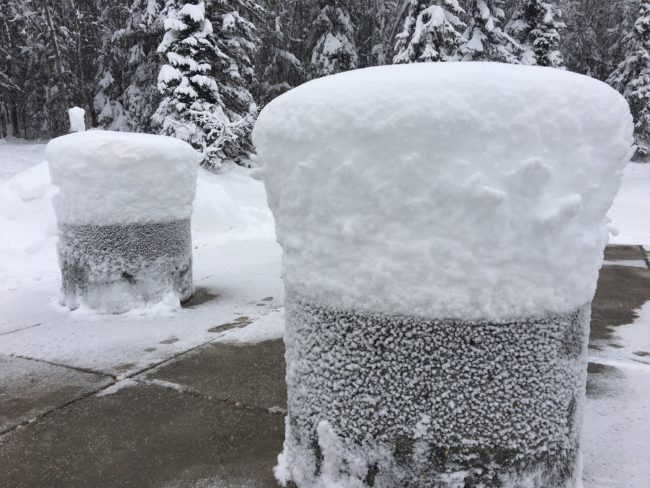
The ingredients for picture perfect snowflakes came together in Southcentral Alaska this past weekend. Climatologist Brian Brettschneider said the snowflakes that fell in were especially large and piled up quickly.
“There’s a couple ways you can get big snowflakes,” Brettschneider said. “You can have really wet snow where the flakes clump together, and when that falls, it really compresses. But we had a situation where the whole thermal profile of the lowest, say, 10,000 feet of the atmosphere was right in a sweet spot to promote large snowflake growth. That’s called the dendritic growth zone and it lets the arms, if you will, of the snowflakes get really, really big and it traps lots of air in it. So its light, low density, snow that really piles up quickly.”
Brettschneider didn’t look at the flakes under a microscope. He didn’t need to: the flakes were that big. And the snow was really dry.
“And when you melt it all out, normally in a typical snowfall about 12 inches of snow would equal one inch of melted water,” Brettschneider said. “In this case, at the Anchorage National Weather Service office, 25 or 30 inches of snow equaled an inch of water — so very, very dry, light snow that piles up quickly.”
If conditions are right, fluffy snow like this can occur in any part of the state. Anchorage, at least this week, was the sweet spot in the state.
“The farther north you go where its really, really cold, Fairbanks and northward, typically the atmospheric profile is too cold to promote that large growth, so usually you don’t get those big dry snowflake ratios,” Brettschneider said.
In the Southeast where it’s typically warmer, the wet snow clumps together and doesn’t pile up in the same way.
“I think most people, especially if you have to shovel a driveway, appreciate the lighter, fluffier snow that’s easier to move around and doesn’t cause as many aches and pains,” Brettschneider said.
Annie Feidt is the broadcast managing editor at Alaska Public Media. Reach her at afeidt@alaskapublic.org. Read more about Annie here.





